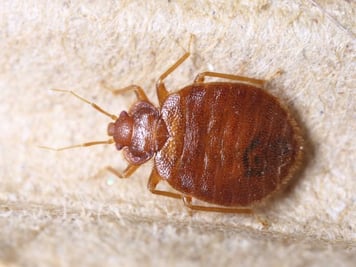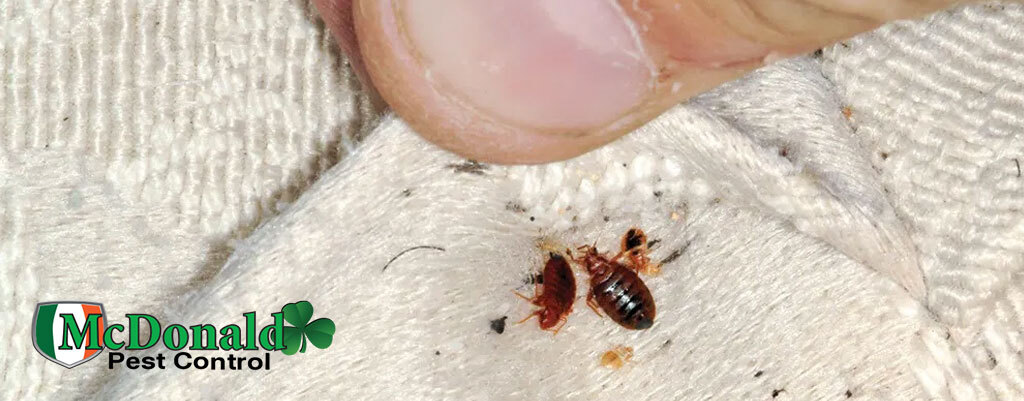Getting The A1 Bed Bug Treatment Houston To Work
Getting The A1 Bed Bug Treatment Houston To Work
Blog Article
The Only Guide to A1 Bed Bug Treatment Houston
Table of ContentsNot known Details About A1 Bed Bug Treatment Houston The Single Strategy To Use For A1 Bed Bug Treatment HoustonA1 Bed Bug Treatment Houston - Truths6 Easy Facts About A1 Bed Bug Treatment Houston DescribedThe 45-Second Trick For A1 Bed Bug Treatment HoustonThe Greatest Guide To A1 Bed Bug Treatment Houston
Bed bugs are blood-sucking insects of the order hemiptera. Unlike mosquitoes or ticks, bed pests do not transfer conditions. Bed pest attacks can trigger sensitive reactions, second bacterial infections (such as impetigo, ecthyma, and lymphangitis) and psychological wellness issues (such as anxiousness and sleeplessness). In recent times, pest control services have raised their bed insect control solutions.They have a flat body with lengthy, slim legs and antennae. Male and women grownups become engorged in regarding 10 to 15 mins; they normally feed every 3 to 4 days, yet they can live over a year without feeding. Women call for blood meals to lay eggs. Each female can injure to 5 eggs per day and regarding 500 eggs in their life time.
In the United States, about 6 species of bed pests feed upon mammals and birds. Cimex lectularius is the most common bed insect in Pennsylvania, along with in the remainder of the United States. A1 Bed Bug Treatment Houston. It is referred to as the "usual bed bug" and favors to feed on humans, yet it can also feed on pets, felines, birds, and rats (see Number 2)
Not known Details About A1 Bed Bug Treatment Houston

Number 3 (right): The various other bed bug located in Pennsylvania is the Eastern bat pest. Picture: Mohammed El Damir, Bed bugs hide throughout the day and avoid places with movement and light during the evening.

Some Known Incorrect Statements About A1 Bed Bug Treatment Houston
Surveillance is a vital device for a successful IPM program for bed bugs. It is made use of to find or evaluate problem levels previously, during, and after therapies of IPM programs. Appropriate identification is very important prior to beginning any type of bed pest therapy because client-made recognitions are frequently unreliable. Bed pests are in some cases mistaken for ticks, fleas, roaches, rug beetles, or other household pests.
Bed pest surveillance is vital to approximate the invasion level before control and the treatment effectiveness after control. The adhering to are kinds of bed bug monitoring techniques.
Some Known Factual Statements About A1 Bed Bug Treatment Houston
Assessors should look for reddish-black areas, eggs, dropped "skin" of larval bed bugs, and premature and grown-up bed bugs in their environment near human resting areas such as beds, couches, and recliner chairs (see Number 5). Furthermore, Full Article the wonderful and stuffy smell created by bed bug waste is characteristic of a modest to high level of invasion.
Picture: Garo Goodrow, Penn State Bed bug smelling canines can discover bed pests with a 97 percent rate of precision. They can find all bed bug life stages in low and high problems.

The Facts About A1 Bed Bug Treatment Houston Uncovered
Number 6: Interceptor cups utilized to catch bed bugs. Photo: Parker Goodrow, close friend of Penn State On top of that, interceptor cups are additionally made use of to review therapy efficiency and to shield beds from bed pests. To take full advantage of protection, it is necessary that beds not touch wall surfaces or any close-by furniture. Dust ruffles or any type of bedding that touches the flooring will also keep the interceptors from functioning as protection from bed insects.
Number 8: Electronic tracking devices used to draw in and trap bed bugs. Photo: David P. James, Flickr (made use of with permission) When both aesthetic inspection and interceptors are used for keeping track of bed bugs, the discovery rate increases to 99 percent.
To avoid this, tourists need to inspect behind head boards, under sheets, and in bed mattress joints and tufts at places where they stay. They need to evaluate their baggage before lugging it back right into their homes and clean and dry all garments with warm water and warm air right away upon return. If furnishings is thrown out because of bed bugs infestation, make it pointless prior to placing in a dumpster or landfill to site here ensure that a person does not unwittingly bring infested things home.
The 10-Second Trick For A1 Bed Bug Treatment Houston
Mechanical control is not hazardous, is eco-friendly, and does not call for a re-entry interval (time that need to pass between the chemical application and the moment that individuals can go back to that area without protective clothes and equipment). Mechanical control does not have a recurring impact so re-infestation of bed insects can take place.
As an alternative, dryers alone can kill bed pests when used at a heat for 15 to 30 minutes. Temperature levels of 131 F or above are deadly to all bed pest stages. Laundering in cold water and drying at reduced temperatures could not kill bed pests. Vacuuming can be used to remove nymphs, shed "skins," and dead bed insects.
Report this page